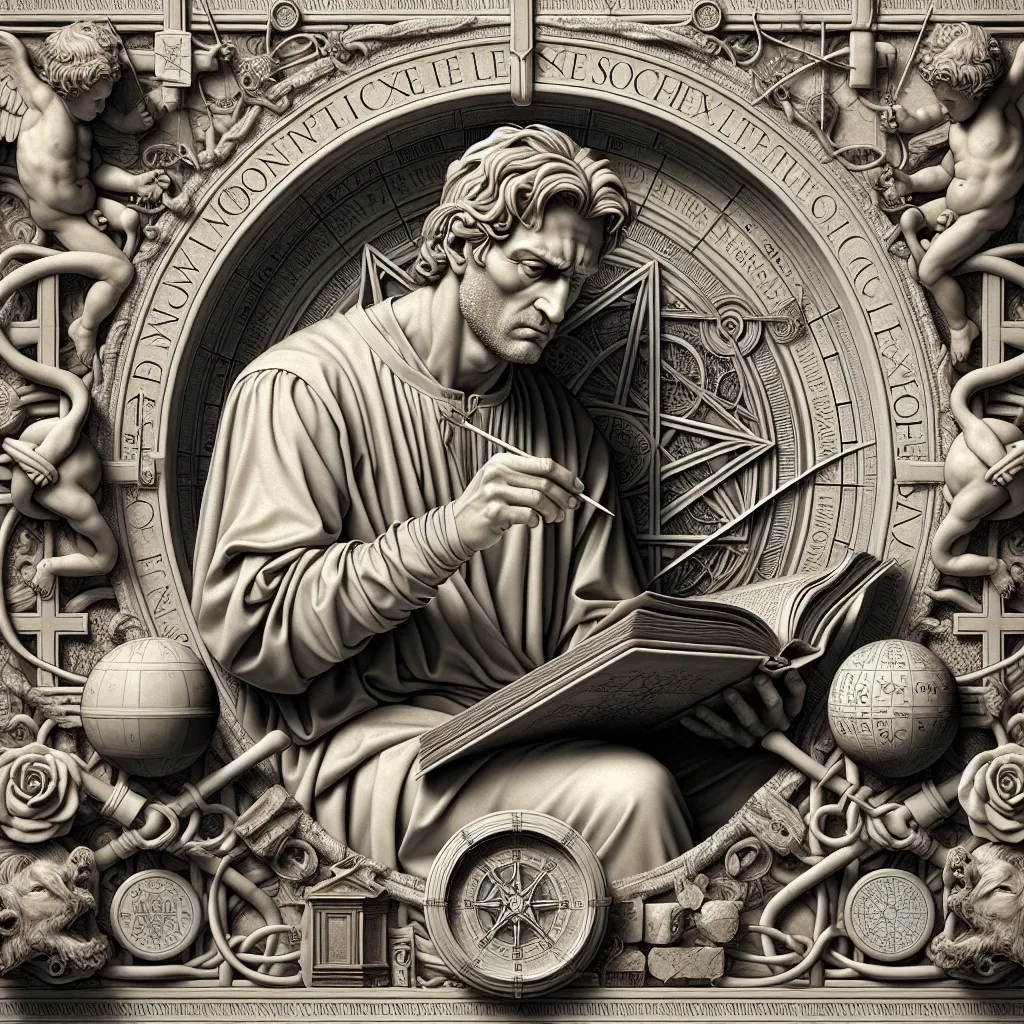
- Published on
- Authors

- Name
- You
Introduction
The intertwining paths of advanced science and mystical wisdom have always captivated human curiosity. Among the towering figures of the Elizabethan era, few stand as prominently as John Dee. Renowned mathematician, alchemist, and advisor to Queen Elizabeth I, Dees enigmatic legacy resonates through history. One of the intriguing connections in the annals of occult history is between John Dee and the Rosicrucian movement.
John Dee: A Brief Overview
John Dee (1527-1608) was a polymath whose breadth of knowledge spanned various disciplines, including mathematics, astronomy, navigation, and alchemy. His reputation as a preeminent scholar was matched only by his penchant for the mystical and the arcane. Dees life and work embodied the Renaissance ideal of the "universal man," where science and magic were not mutually exclusive but complementary endeavors.
The Rosicrucian Movement: Origins and Goals
The Rosicrucian movement emerged in the early 17th century with the publication of several manifestos, most notably the Fama Fraternitatis (1614) and the Confessio Fraternitatis (1615). These texts described the clandestine fraternity of Rosicrucians, dedicated to spiritual enlightenment, scientific discovery, and transforming society.
Key Tenets of Rosicrucianism
- Spiritual Enlightenment: Seeking higher spiritual truths beyond the dogmatic constraints of established religion.
- Alchemical Transformation: Both literal and metaphorical transmutation aimed at refining the soul.
- Scientific Exploration: Pursuing empirical research and experimental science.
Dees Influence on Rosicrucian Philosophy
Magical Practices and Symbology
Dees work in the realms of alchemy and angelic communication profoundly influenced the symbolic language of the Rosicrucians. His development of the Enochian language, purportedly received from angelic beings, echoes in Rosicrucian rituals and texts.
Enochian Language Table
| Enochian Letter | Angelic Name | Meaning |
|---|---|---|
| A | Un | The beginning or root |
| B | Ged | The second or emerging |
| C | Graph | Formation or structure |
The Monad Hieroglyphica
Dees treatise, the Monas Hieroglyphica (1564), presented a complex symbol he believed encapsulated the unity of all creation. This glyph became a critical element in Rosicrucian symbolical language, representing the interconnectedness of the spiritual and physical realms.
Scientific Approaches
Dee’s pioneering spirit in scientific inquiry laid the groundwork for the empirical aspirations of the Rosicrucians. His work on navigation and astronomy not only advanced these fields but also demonstrated the harmonious coexistence of science and mysticism.
Parallels and Divergences
While there are undeniable parallels between Dee’s teachings and Rosicrucian philosophy, notable divergences exist. Dees work was heavily focused on personal enlightenment and metaphysical studies, whereas the Rosicrucians placed a more explicit emphasis on societal transformation and esoteric communalism.
Conclusion
The connections between John Dee and the Rosicrucian movement underscore a fascinating intersection of advanced science and mystical wisdom. Dee’s contributions to both fields indelibly influenced the philosophical and practical framework of the Rosicrucians, cementing his legacy as a pivotal figure in the confluence of Renaissance science and magical tradition.
By examining the nuanced ties between John Dee and the Rosicrucian movement, one gains a deeper appreciation for the rich tapestry of history where science and mysticism coexist, offering timeless insights into the human quest for knowledge and enlightenment.
